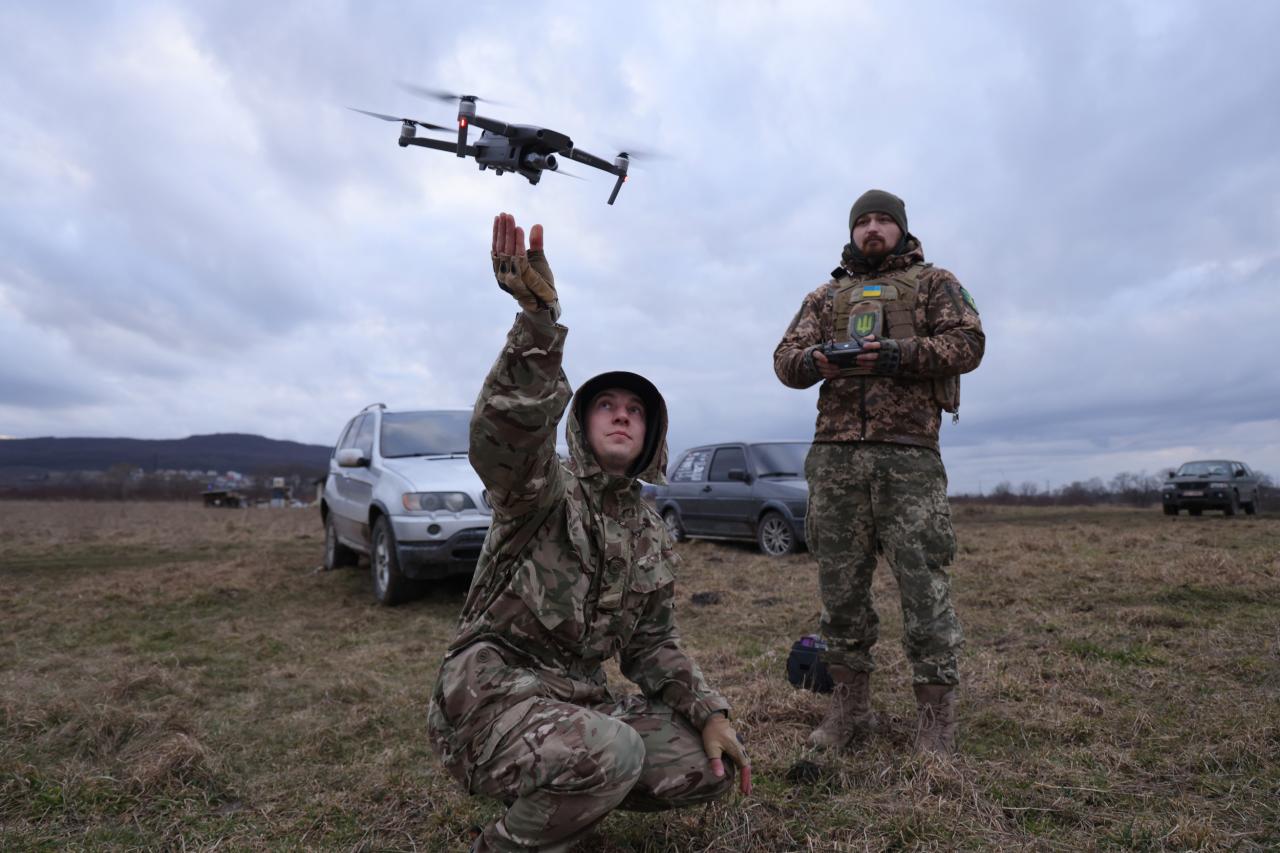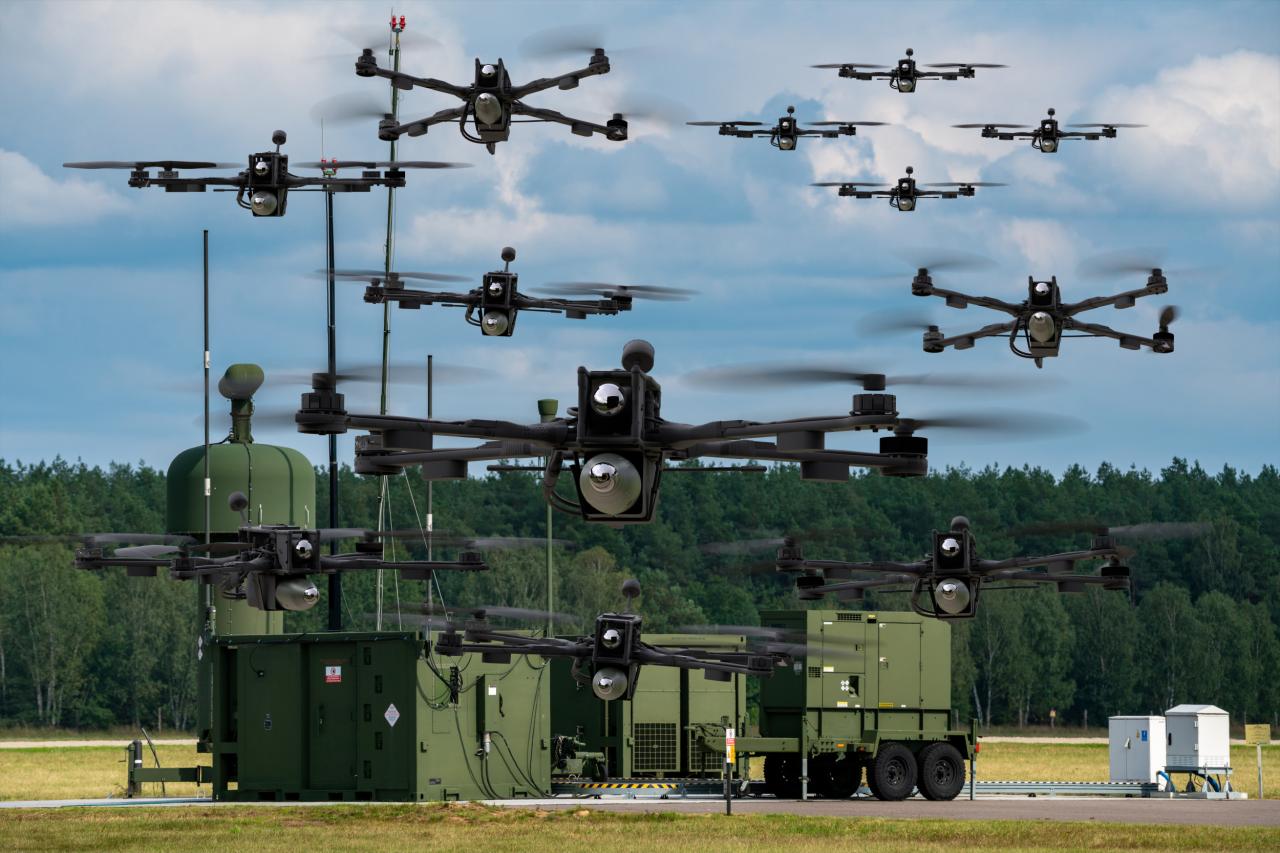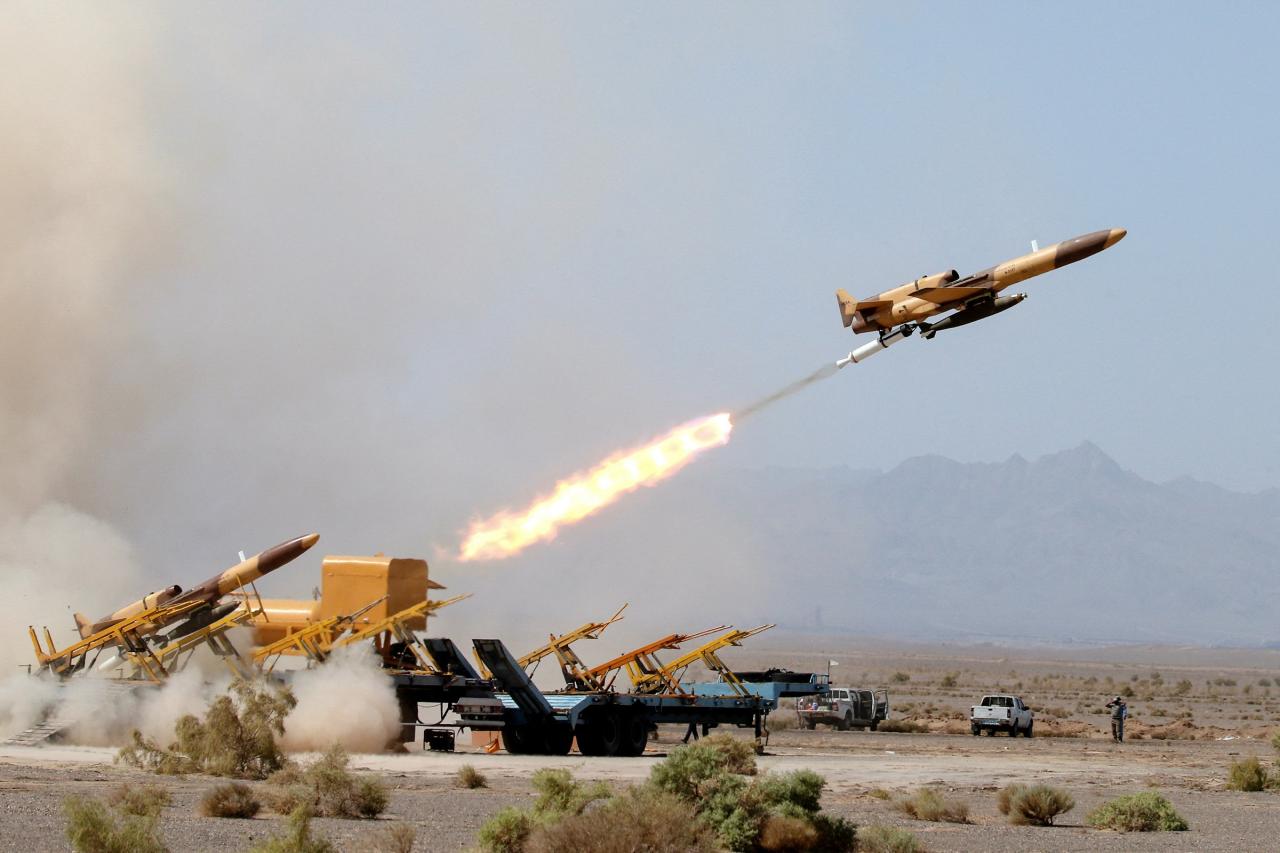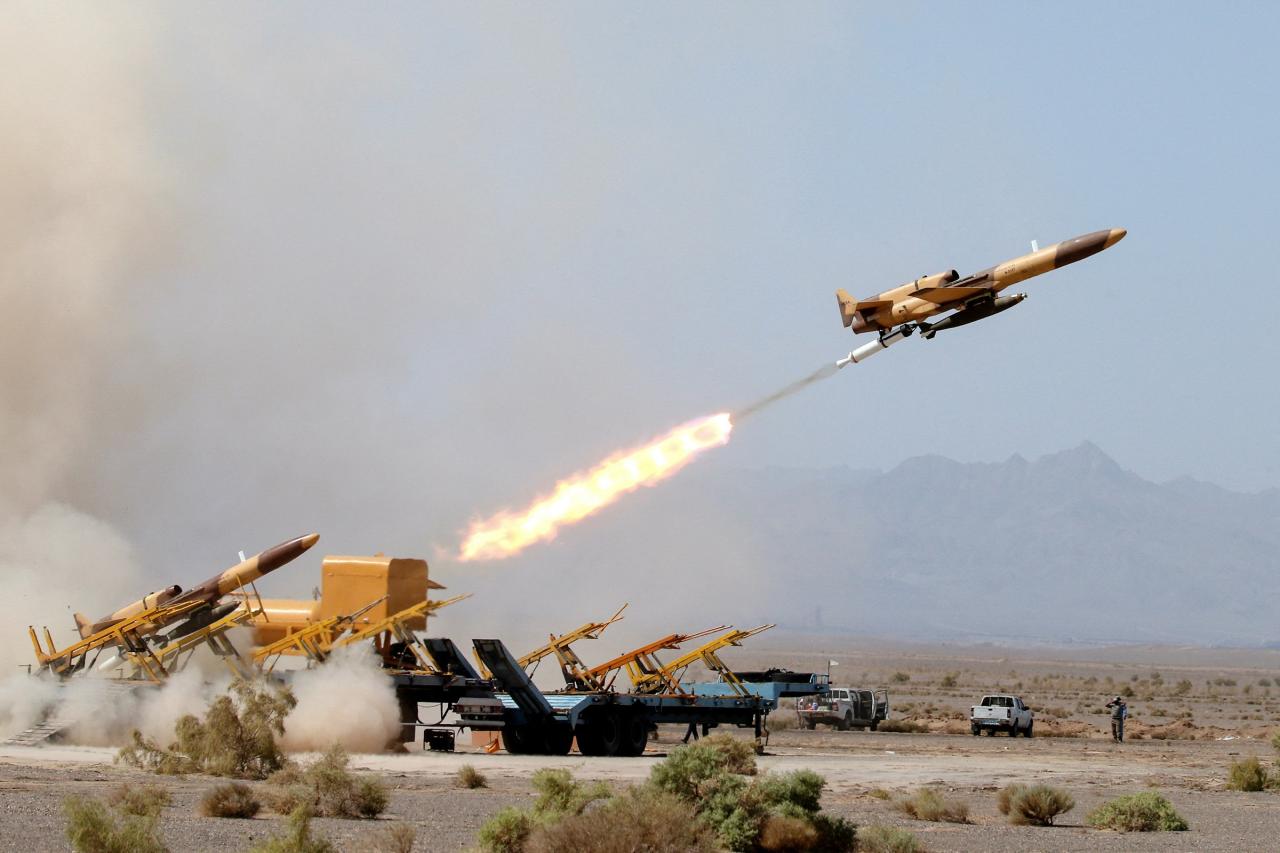Drone attack Russia has become a significant aspect of the ongoing conflict, raising questions about tactics, technology, and international implications. This exploration delves into the geographic targeting of attacks, the types of drones used, their deployment methods, and the consequences for both military and civilian infrastructure. We’ll also examine Russia’s countermeasures, international responses, and future trends in drone warfare.
Understanding the complexities of these attacks requires analyzing the actors involved, the technological advancements driving them, and the geopolitical ramifications. We’ll unpack the evidence surrounding attributions of responsibility, explore the challenges in definitively identifying perpetrators, and examine the broader international legal and political landscape shaped by this evolving form of conflict.
Geographic Targeting of Drone Attacks in Russia
Drone attacks against Russia have demonstrably targeted specific geographic locations, revealing patterns suggesting strategic objectives beyond simple disruption. Analyzing these locations, the frequency of attacks, and the suspected perpetrators offers crucial insights into the ongoing conflict.
Primary Target Locations and Attack Frequency
Several key areas within Russia have experienced a disproportionate number of drone attacks. The selection of these targets suggests deliberate efforts to impact military capabilities and infrastructure.
| Location | Frequency of Attacks (Approximate) | Suspected Perpetrator(s) | Strategic Significance |
|---|---|---|---|
| Bryansk Oblast | High | Ukraine (claimed by Ukraine, denied by Russia) | Proximity to the border; potential disruption of supply lines and military movements. |
| Moscow | Moderate | Ukraine (claimed by Ukraine, denied by Russia) | Symbolic targeting of the capital; aims to demonstrate capability and weaken morale. |
| Belgorod Oblast | High | Ukraine (claimed by Ukraine, denied by Russia) | Border region; potential disruption of military bases and logistics. |
| Crimea | Moderate to High | Ukraine (claimed by Ukraine, denied by Russia) | Strategic peninsula; significant military presence; targeting airfields and military infrastructure. |
Strategic Significance of Target Locations
The choice of targets reveals a strategic focus on disrupting military operations and logistics. Attacks near the border aim to impede the movement of troops and supplies, while attacks on Moscow and Crimea carry symbolic and strategic weight, aiming to demonstrate the reach and effectiveness of the drone attacks.
News about drone attacks in Russia is pretty intense right now, huh? It’s a crazy situation. If you need a break from all the tension, maybe try setting up your printer – check out this guide for canon ts3420 wifi setup if you’re having trouble. Once you’re done, you can get back to following the latest updates on the drone attacks.
It’s a pretty wild time geopolitically.
Drone Types Used in Different Locations
While precise details on drone models are often unavailable due to security concerns, observed characteristics suggest variations in the types of drones used across different geographic locations. Smaller, commercially available drones might be favored for attacks closer to the border, while larger, more sophisticated drones might be used for longer-range attacks on key military bases.
Types of Drones Used in Attacks
A variety of drones, ranging from commercially available models modified for military use to more advanced, purpose-built systems, have been employed in attacks against Russia. Understanding their capabilities and limitations is crucial for assessing the effectiveness of these attacks.
Drone Specifications and Capabilities
| Drone Type | Range (Approximate) | Payload Capacity (Approximate) | Stealth Capabilities |
|---|---|---|---|
| Modified Commercial Drones | Short to Medium | Low | Limited |
| Purpose-Built Military Drones | Medium to Long | Medium to High | Improved |
| UAVs (Unmanned Aerial Vehicles) | Variable | Variable | Variable |
Specific Drone Models and Their Use
While specific models are rarely publicly identified, reports suggest the use of both commercially available drones, such as modified DJI models, and potentially more advanced, military-grade drones with greater range and payload capacity. The use of different models likely reflects the strategic goals of each attack and the availability of resources.
Recent drone attacks on Russia are raising serious questions about national security and potential escalations. Understanding the geopolitical implications requires looking at various factors, including the impact on satellite communication companies like those whose stock you can research at ses stock. These companies play a crucial role in global communications, and disruptions could significantly affect their performance.
The long-term consequences of these drone attacks remain uncertain, impacting various sectors.
Methods of Drone Deployment and Operation
The deployment and operation of drones in attacks against Russia involve complex logistical challenges, requiring careful planning and execution. Several methods and potential routes are likely employed.
Drone Deployment Methods and Logistical Challenges
The challenges include maintaining stealth, overcoming electronic countermeasures, and ensuring the successful delivery of payloads. The distance to targets and the need for safe launch and recovery sites significantly complicate these operations.
Potential Launch Sites and Routes
- Ukraine’s border regions
- Neighboring countries (speculation only)
- Civilian infrastructure, potentially disguised as commercial activity
Impact and Consequences of Drone Attacks
Drone attacks against Russia have yielded both short-term and long-term consequences, impacting military infrastructure, civilian populations, and the geopolitical landscape.
Short-Term and Long-Term Consequences
Short-term impacts include physical damage to military targets and disruption of operations. Long-term effects may include a shift in military strategy, increased defense spending, and an escalation of tensions.
Impact on Civilian Populations and Infrastructure
While primarily targeting military assets, drone attacks have occasionally resulted in unintended damage to civilian infrastructure and casualties. These incidents highlight the challenges of precision targeting and the potential for collateral damage.
Reported Effects vs. Official Russian Statements
There is often a significant discrepancy between reports from independent sources and official Russian statements regarding the extent of damage and casualties caused by drone attacks. Russia often downplays the impact of these attacks.
Attribution and Responsibility
Attributing responsibility for drone attacks against Russia presents significant challenges due to the clandestine nature of the operations and the lack of clear evidence in many cases.
Suspected Actors and Evidence

Ukraine has claimed responsibility for some attacks, but Russia denies these claims and often attributes attacks to other actors or dismisses them entirely. Independent verification of claims remains difficult due to limited access to information and the lack of transparency from all parties involved.
Challenges in Definitively Attributing Responsibility
The use of readily available commercial drones and the potential for false flag operations make definitive attribution extremely challenging. Determining the true origin and control of the drones requires meticulous investigation and evidence gathering.
Russia’s Response and Countermeasures
Russia has implemented various methods to defend against drone attacks, but their effectiveness remains a subject of debate.
Methods of Defense and Their Effectiveness, Drone attack russia
These measures include electronic warfare systems, air defenses, and improved intelligence gathering. However, the continued success of drone attacks suggests that these countermeasures are not entirely effective.
Technological and Strategic Responses
- Deployment of electronic warfare systems
- Strengthening air defenses
- Investment in drone detection and counter-drone technologies
- Increased border security
International Implications

Drone attacks against Russia have significant international legal and political implications, prompting diverse reactions from various countries and international organizations.
Legal and Political Implications

The legality of drone attacks under international law is complex and debated. The use of drones raises concerns about sovereignty, proportionality, and the potential for escalation.
Reactions of Countries and International Organizations
The international community’s response has been varied, with some countries expressing concern about the escalation of the conflict while others remain silent or supportive of the actions taken.
Responses in Different Geopolitical Contexts
The responses to drone attacks are influenced by the geopolitical relationships between the involved parties and their broader foreign policy objectives.
Technological Advancements and Future Trends: Drone Attack Russia
Technological advancements in drone technology continue to shape the nature of drone warfare. Predicting future trends requires considering the ongoing development and deployment of new capabilities.
Potential Developments in Drone Technology
| Technological Advancement | Potential Impact on Drone Warfare | Timeline (Estimate) | Implications for Russia |
|---|---|---|---|
| Improved AI and autonomy | Increased effectiveness and reduced reliance on human operators | Near-term | Need for enhanced countermeasures |
| Swarm technology | Overwhelming defenses through coordinated attacks | Mid-term | Requirement for robust layered defenses |
| Enhanced stealth capabilities | Increased difficulty in detection and interception | Long-term | Need for advanced detection and counter-drone systems |
Wrap-Up
Drone attacks against Russia represent a dynamic and evolving aspect of modern warfare. The analysis presented here highlights the technological sophistication of these attacks, the strategic choices behind targeting, and the significant consequences for all involved. As drone technology continues to advance, understanding these attacks remains crucial for comprehending the future of conflict and international security. Further research into the specific drone models and their capabilities, alongside a deeper investigation into the long-term effects on civilian populations, will be essential for a more complete understanding.
Detailed FAQs
What are the main types of drones used in attacks on Russia?
Various types are employed, ranging from commercially available drones modified for military use to more sophisticated, purpose-built UAVs. Specific models and their capabilities are often kept confidential for security reasons.
How effective are Russia’s countermeasures against drone attacks?
Russia employs a range of countermeasures, including electronic warfare, air defenses, and improved surveillance systems. Their effectiveness varies depending on the type of drone, the attack’s scale, and the sophistication of the tactics used.
Recent drone attacks in Russia have highlighted the increasing use of unmanned aerial vehicles in conflict. This isn’t just a localized issue though; to understand the broader context, check out this resource on drone sightings around the world which shows just how prevalent drones are becoming globally. The implications of this technology, as seen in the Russian attacks, are far-reaching and demand further investigation.
What are the international legal implications of these drone attacks?
The legality of drone attacks is a complex issue with varying interpretations under international law. Key considerations include proportionality, distinction between combatants and civilians, and the authorization of attacks under international humanitarian law.
